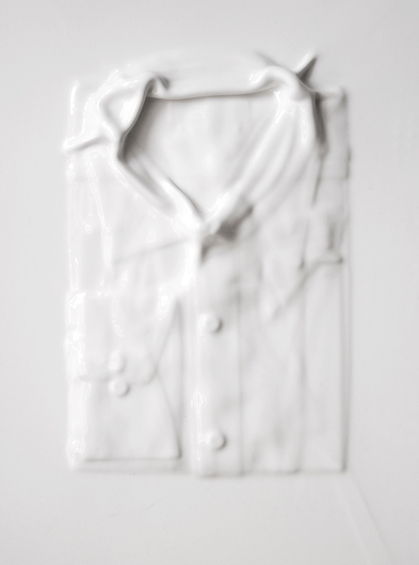-
From Current Issue
-
- Editor’s Letter Fire in the Heart
- Reviews I Gusti Ayu Kadek Murniasih
- Reviews 11th Seoul Mediacity Biennale: “One Escape at a Time”
- Dispatch Networked China
- One on One Monira Al Qadiri on Yukio Mishima
- Essays The rise of independent art spaces in pandemic-era Shanghai
- Features Tuan Andrew Nguyen
- Table of Contents
- Web Exclusives
- Archive
- Subscribe

R
E
V N
E
X
T
After being closed for the summer, Dubai’s Cuadro Fine Art Gallery, in conjunction with Baku-based YAY Gallery, is presenting their second collaborative exhibition as its inaugural show for the fall season. Entitled “Meeting Point,” it brings together a variety of artists—whose works range from sculpture and installation to painting and collage—to explore concepts that relate to their home country of Azerbaijan.
Azerbaijan’s art scene has drastically transformed in the past few decades with the fall of the Soviet Union, and the country’s subsequent independence, in 1991. Seeking a new identity, a shift in the way of thinking and living took place that differed from the communist ideals that had previously ruled its society. Moreover, the five artists who are featured in the exhibition—Rashad Alakbarov, Orkhan Huseynov, Aida Mahmudova, Nazrin Mammadova and Farid Rasulov—are touted as “pioneers of Azerbaijani contemporary art as we know it today.”
The exhibition starts with the space in front of the gallery’s entrance. Aida Mahmudova’s large-scale work, Untitled (2015), is situated directly in front of the viewer as they enter the venue. Mahmudova is also the founder of YARAT, a not-for-profit art organization based in the Azerbaijani capital of Baku, aimed at nurturing the local contemporary art scene. Her piece fills a wall, measuring at over two meters tall and more than three meters wide. Made from mixed media, the composition is bursting with blues, greens, yellows and reds, forming nostalgic landscapes of her homeland, meant to capture and preserve places and architecture that may soon disappear in the process of the country’s fast-paced modernization.
Three tall sculptures by Farid Rasulov, Uprise 1, 2 and 3 (all 2015), are installed on the left-hand side of the first room. These two-meter-tall, Islamic-patterned ash wood carvings speak to the precision of the artist—who had originally trained to become a medical doctor—and his study of traditional wood-carving techniques. Portraying everyday items, the artist continually denies that they have any hidden meaning besides what they are as objects. However, the traditional associations and methods through which the works are made seem to speak to the established history of Rasulov’s native country.
Several artworks not mentioned or elaborated on in the exhibition’s catalogue are included within the show, such as Faig Ahmed’s Outflow (2012). Ahmed is another prominent artist from Azerbaijan who, like Rasulov, works with concepts of tradition and modernity. Taking old-fashioned carpet patterns, he rearranges them to mesh with contemporary aesthetics.
The second room of the exhibition hosts several more pieces. Despite being purely white, Orkhan Huseynov’s “Yusuf” (2015)—a series of four diptych reliefs made from plexiglass—stands out. Each pair of reliefs portrays a folded shirt accompanied by text presenting a chapter from the Quran. The religious writing contrasts with the modern, button-down shirts. Like much of Huseynov’s works, which draw on history, folk traditions and current daily life, “Yusuf” is a representation of Azerbaijan’s traditional and modern aspects. Representing a break from Soviet ideals, Huseynov combines religious practices with Western capitalism, as the old and new cross over in his fast-changing country.
The works in the exhibition are varied and each one is uniquely different; yet they come together to paint an overall picture of art within today’s Azerbaijan. Although, at times, it is challenging to distinguish which pieces are (or are not) part of the exhibition, as works by the gallery’s represented artists are inexplicably intermingled within the “Meeting Point” display. Nonetheless, the actual works from the exhibition demonstrate that contemporary Azerbaijani art is very much alive and growing. The country’s artists are exploring themes central to the rapidly industrializing nation, as well as universal issues that are familiar throughout the world.





